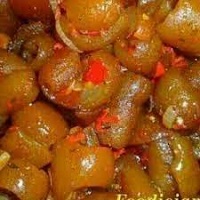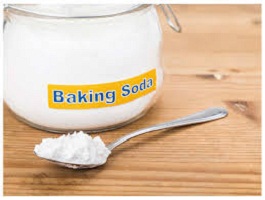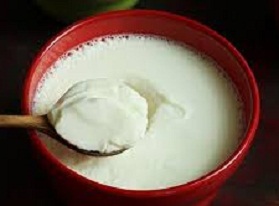Is it Healthy (Good or Bad) to Eat Cow Skin Meat? Pomo Meat
Is it Healthy (Good or Bad) to Eat Cow Skin Meat? Pomo Meat

Cow Skin meat, edible cowhide is popularly known as Kanda, Kpomo, or Pomo is the hairy covering of a cow.
Kanda, Kpomo, or Pomo is the hairy covering of a cow and is generally known as Cow Skin meat. The skin is a cow’s largest organ and serves as a protective covering.
Check out these articles >>>
- Cow Skin: Solid Truths About Eating Cow Skin (Pomo)
- Peppered Kpomo Recipe -Nigerian Cow Skin (Ponmo) Appetizer
- Cow Skin Food: How Can Cow Skin (Ponmo) Be Used as Food?
About Cow Skin Meat
Ponmo has become a favorite local delicacy among all socioeconomic groups. It’s wonderful weight-loss meat because it’s distinctive, has fewer calories, and tastes good when prepared properly in meals.
There has long been a debate about whether eating cow skin is good or bad. While some scholars believe that edible cow skin (kpomo) has no nutritional benefit!
This second group of scholars, on the other hand, completely disagrees with that assertion and instead chooses to qualify it by stating that cow skin has a low nutritional value when compared to other meat protein sources.
Kpomo is processed cow skin meat that may be cooked and eaten like beef, such as the traditional peppered Pomo. In Nigeria, where can I buy cow skin meat? Kanda meat hawkers, markets, slaughterhouses, etc.
Pomo is a Nigerian delicacy that is particularly tasty when added to soups and stews. On the other hand, others want spicy peppered kponmo meat to whine their mouths and keep their jaws occupied.
Other African countries, such as Ghana, Cameroon, Togo, and the Benin Republic, produce delectable dishes with cowskin meat. West Indians and Caribbeans aren’t the only ones that consume ponmo.
Cow Skin Meat Nutrition Facts and Calories – Health Benefits
The nutritional value of kpomo will assist you in deciding whether to use cow skin for your shoes or better skin health.
A 100-gram serving of boiled, thick cow skin has 224.65 calories, 46.9 grams of protein, 6.80 grams of carbs, 1.09 grams of fat, 43.9 grams of water, and 0.02 grams of fiber.
It also contains iron (4.3 mg), calcium (61 mg), magnesium (12 mg), phosphorus (36 mg), and low levels of zinc in terms of minerals (6.79 mg).
Furthermore, Kpomo contains skin collagen and a small quantity of protein, thus it is still beneficial to the body. So, Pomo offers some nutritional value while adding little to your diet.
Collagen is a protein found in large amounts in human bodies. There is no need to take collagen for growth because our bodies make it. However, as we age, our ability to generate collagen declines, resulting in wrinkles.
We can diminish our ability to generate more collagen by eating more refined carbs or sugar (white rice, white flour), smoking, and being exposed to ultraviolet radiation from the sun; therefore, a cow skin diet can help.
Collagen has been promoted for its ability to renew the skin, build muscle, increase skin elasticity, improve hair, and relieve arthritic pain.
How to Process Cow Skin into Ponmo
If not properly cooked, cow skin is difficult to consume and requires time to prepare.
How to Perfectly Clean Cow Skin Meat
- First and foremost, bring a saucepan of water to a boil over high heat to cover the cow skin.
- Next, take the pan from the heat and place it in a dish of cold water to cool. After that, scrape out what’s within the Pomo using a sharp knife.
- Additionally, an iron sponge purchased specifically for washing cow skin can be used to remove any dark particles from the skin as you wash to lighten it.
- Finally, after thoroughly cleaning the cow skin, dispose of it and replace the water. Add new water and soak for as long as you like in clean water.
Processing of cow skin
There are three approaches to this. The first two treatments include removing and softening the hair from the skin, while the third involves tanning.
White Pomo
The white Pomo is significantly healthier than the dark Ponmo since the cow skin is processed into the meat rather than burned, which can be detrimental to human life.
Method
- The skin is first, peeled away from the flesh.
- The cow is then immersed in boiling water or infuses it after slaughtering it, causing it to inflate and puff up.
- After that, hot water is then poured over the skin to soften it, and the hair is gently shaved off.
- Finally, they are boiled until they are tender enough to eat.
The skins of the prepared cow, on the other hand, are immersed in water for a few hours to generate a moderate fermentation process that softens them.
Pomo Noir (Dark Pomo)
The skins are scraped and burned on an open fire (or possibly burning tires or petrochemicals) to remove hair while burning.
After that, it’s sliced into smaller pieces and boiled.
The type of fire used to process a dark Pomo may have an impact on its health; if it’s firewood, it’s usually a minor issue, whereas tires and petrochemicals are a huge one.
Residents of Lagos have been warned against eating toxic Pomo because of the petrochemicals and tires used in the commercial processing of cow skin. According to thisdaylive.com, a new paper has been published.
Cow Skin Tanning
The process of processing animal skin to make leather is known as hides and skin.
The tanning hide in the skin entails permanently altering the protein in the skin, making it more robust and less prone to decay, and giving it color.
Ponmo stands out as the best meat substitute for exquisite outdoor/indoor specialties all over the world, and it’s heart-friendly, so eat it in moderation.
Cow skin
Cow skin, commonly known as beef tripe, is the edible lining from the stomach of cattle. While it may not be as popular as other cuts of meat, it is consumed in various cuisines around the world.
Here are some potential benefits of cow skin meat:
Rich in Protein:
Like other meat products, cow skin is a good source of high-quality protein. Protein is essential for building and repairing tissues, supporting immune function, and maintaining overall health.
Collagen Content:
Cow skin is rich in collagen, a structural protein that is crucial for maintaining the health of skin, joints, and connective tissues. Collagen is also known to promote skin elasticity and joint flexibility.
Nutrient Density:
Cow skin contains various nutrients, including vitamins and minerals such as iron, zinc, and B vitamins. These nutrients play important roles in various bodily functions, including energy metabolism, immune function, and blood formation.
Potential for Gelatin Production:
Cow skin can be processed to produce gelatin, a substance with various culinary uses. Gelatin is often used in desserts, soups, and various food products. It may also have some health benefits, such as supporting joint health and improving skin condition.
Cultural and Culinary Diversity:
In many cultures, cow skin is used in traditional dishes, adding diversity to the culinary landscape. The preparation and consumption of tripe vary widely, and it is often included in stews, soups, or grilled dishes.
It’s important to note that while cow skin can offer nutritional benefits, it may not be suitable for everyone. Some people may find the taste, texture, or odor unappealing.
Additionally, individuals with certain dietary restrictions or health conditions may need to be cautious about consuming certain animal products.
As with any food, moderation is key, and it’s essential to consider individual preferences and dietary needs.
If you have specific dietary concerns or health conditions, it’s advisable to consult with a healthcare professional or a registered dietitian for personalized advice.
What nutritional benefits does cow skin meat offer?
Cow skin meat, also known as beef tripe, is rich in high-quality protein, essential for tissue repair and immune function. It contains collagen, promoting skin and joint health, and provides essential vitamins and minerals such as iron, zinc, and B vitamins.
How does the collagen in cow skin meat contribute to health?
Collagen is a structural protein found in cow skin meat that supports skin elasticity, joint flexibility, and connective tissue health. Consuming collagen may contribute to improved skin and joint health.
Are there any specific nutrients in cow skin meat that are noteworthy?
Yes, besides protein and collagen, cow skin meat contains essential nutrients like iron, which is important for blood formation, and zinc and B vitamins that play roles in various bodily functions, including metabolism and immune support.
Can cow skin meat be beneficial for those looking to boost their protein intake?
Absolutely. Cow skin meat is a good source of protein, making it a valuable addition to a diet aiming to meet protein needs. Protein is crucial for muscle maintenance, repair, and overall body function.
Are there culinary uses for cow skin meat?
Yes, cow skin meat is used in various traditional dishes around the world. It can be included in stews, soups, or grilled dishes, adding cultural diversity to culinary practices.
What precautions should individuals take when consuming cow skin meat?
While cow skin meat has nutritional benefits, individual preferences and dietary restrictions should be considered. Some people may find its taste or texture unappealing, and individuals with dietary restrictions or health conditions should consult healthcare professionals for personalized advice.
Can cow skin meat be processed into other products with health benefits?
Yes, cow skin can be processed to produce gelatin. Gelatin has culinary uses and may offer benefits such as supporting joint health and improving skin conditions.
How should cow skin meat be included in a balanced diet?
Cow skin meat can be part of a balanced diet when consumed in moderation. It can be prepared in various ways, ensuring a diverse and nutrient-rich approach to overall nutrition.
Remember, individual dietary needs vary, and it’s advisable to consult with healthcare professionals or dietitians for personalized advice based on specific health conditions or concerns.
Spread the word


